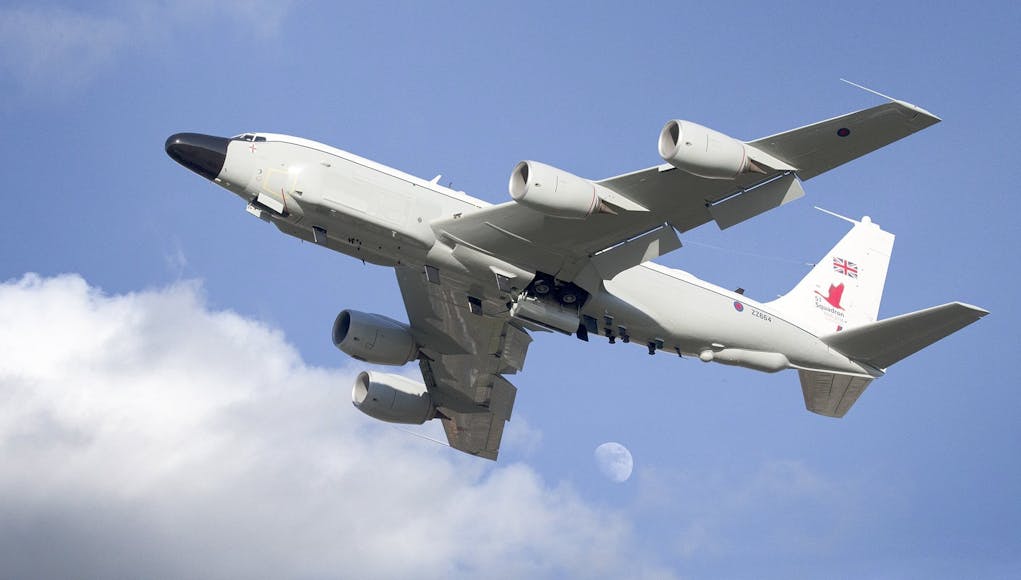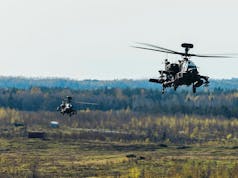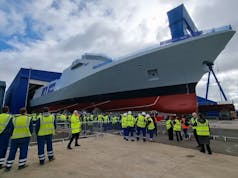The Royal Air Force has declared the full operational capability for the RC-135 Rivet Joint or ‘Airseeker’ ahead of schedule.
The Airseeker capability comprises the RC-135W Rivet Joint aircraft and a ground-based analysis unit. The programme was initiated to replace the Nimrod R1 which retired in 2011 and to sustain the UK Airborne Electronic Surveillance capability ‘against an evolving target set’ to 2035.
Chief of the Air Staff, Air Chief Marshal Sir Stephen Hillier, said:
“The Royal Air Force’s Airseeker/Rivet Joint system has achieved full operational capability. A vital part of our ISTAR Force, it provides critical information and understanding to decision-makers in an increasingly complex, congested and contested battlespace.
It offers essential support not only to air power operations but also to every aspect of joint capability across Defence, and in concert with our allies.”
The ISTAR Force Commander, Air Commodore Dean Andrew, said:
“Airseeker complements the wide-range of Intelligence, Surveillance, Target Acquisition and Reconnaissance (ISTAR) assets under my command at RAF Waddington, and I am pleased to welcome this world-leading capability to the ISTAR Fleet. I continue to be impressed by what Airseeker and the personnel who operate and support is provided to Defence, and I look forward to it contributing on an increasingly enduring scale in the future.”
Last year, defence firm L3 delivered the third and final RC-135V/W Rivet Joint signals intelligence aircraft to the Royal Air Force, a milestone marking the completion of the Airseeker delivery programme.
The three aircraft form the backbone of the UK’s Airseeker capability, providing new and collaborative intelligence, surveillance and reconnaissance resources in support of global security missions. Upon touchdown at Royal Air Force Waddington, the aircraft was formally transferred to the RAF, completing the hardware deliveries under the Foreign Military Sales contract valued at approximately $1 billion.
Taken together, the UK and USAF fleet form a combined fleet of 20 aircraft, and L3 say they will perform future baseline upgrades and periodic depot maintenance on the fleet. L3 has also delivered a station to support ground operations and training systems to train both operators and maintainers.
“This groundbreaking agreement gives the UK access to future innovative technology and presents a very high level of interoperability with major coalition partners,” said Christopher E. Kubasik, L3’s President and Chief Operating Officer.
“Analysts have hailed this UK/US program as the highest level of intelligence cooperation between the two countries since World War II,” said Mark Von Schwarz, L3’s Senior Vice President and President of its Aerospace Systems business segment.
The MoD has also provided details of the crew level required to operate the aircraft.
“The exact number depends on the nature of the task, but a typical mission sortie would have around 25 crew members on board, with approximately 35 for full training missions.”
It was revealed last year that the RAF had deployed Rivet Joint to provide intelligence and analysis of the situation in Northern Iraq. Then Defence Secretary Michael Fallon confirmed the deployment:
“I can confirm we have deployed Rivet Joint, our very latest surveillance aircraft, the successor to Nimrod, to give us a much better picture, more intelligence and analysis of what is happening on the ground which will help the Iraqi government, the Kurdish forces and the Americans.”
The information and intelligence generated by Rivet Joint was forwarded on to the Iraqi government, Kurdish fighters and US forces in the region to assist in combating Islamic State.















Excellent.
Airborne ISTAR and ISTAR in general is one area the UK is well provided for in most areas and I would like to see this area expanded even more.
I know, I should write to my MP, who I doubt even cares, or to the SoS for Defence.
Though I feel even you TH see the value in this sort of equipment?
Very nice.
Oh wait, that’s terrible news, early, ahead of schedule, I bet there are penalties the MOD have to pay for that, it’ll cost the UK a fortune and early delivery is a total disaster because, ummm, it’ll mean a total upset of the scheduled plan, and we shouldn’t spend money anyway on surveillance, what is this, a spy country that invades the privacy of potential enemy locations? Shocking, simply shocking, I demand they all resign, collect their P45s or is it P38s?
Ha. Although the likes of the Guardian spit their bib out of their mouths at the horror of the UK actually spying on others we are just part of the game being played by everybody else.
And when it comes to the game of spying on others we are one of the best players on the field. The cliche of “punching above our weight” is such a tired and worn cliche, further tarnished by politicians often using it to distract from or cover up deficiencies, but in the case of our intelligence services we are genuinely still a global heavyweight with a huge depth of knowledge and experience so it is probably apt.
Bang on Julian. One of our trump cards.
The RAF has declared full operating capability for all of its new platforms in recent years, all are still waiting to actually achieve it